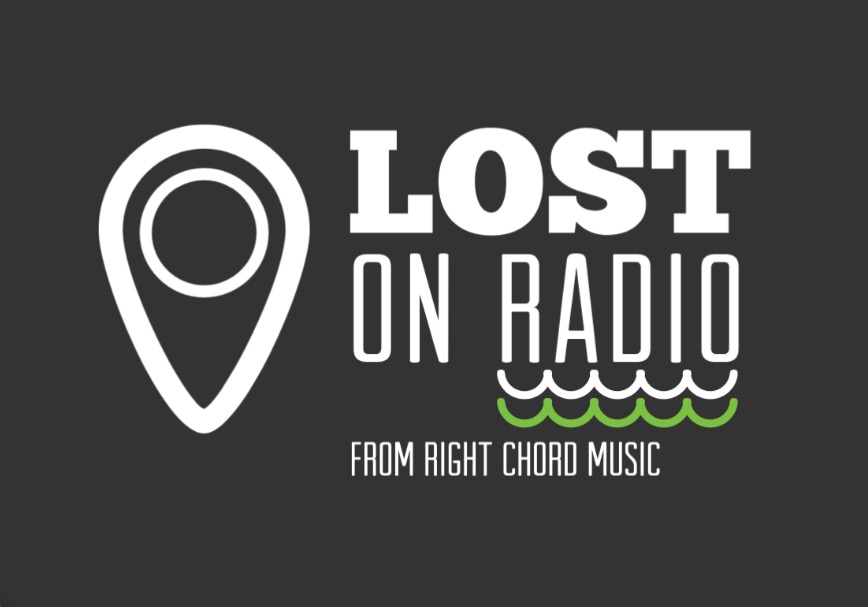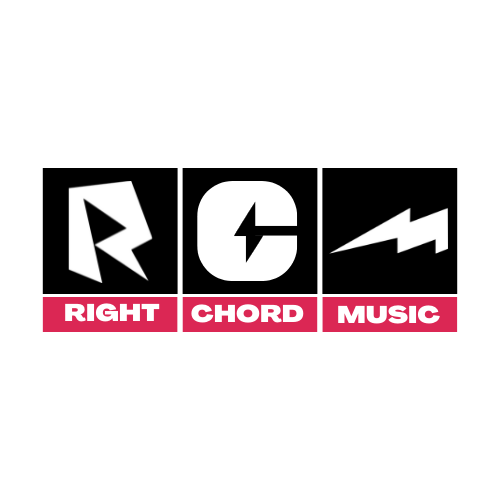Unless you have been hiding under a rock for the last 18 months you will have likely heard something about NFTs. But do you understand how they are helping independent musicians? In an attempt to understand the opportunity we interviewed four musicians at the forefront of the NFT music community. This article summarises these conversations.
What is an NFT?
In basic terms, an NFT (Non-fungible Token) is digital proof of ownership that lives in the blockchain. ‘Non-fungible’ just means it’s unique and can’t be replaced or destroyed.
If that explanation still leaves you baffled, think of this analogy…
When I was young I traded PANINI football stickers, just imagine if PANINI decided to only print one Lionel Messi football sticker rather than 1,000,000. Now imagine you were lucky enough to own it, had proof you were the only one to own it and there was no way you could lose it. That’s basically the principle behind an NFT.
Now swap Lionel Messi’s face out for a unique piece of art, music, video, invite to an exclusive event or even an item of clothing? (physical or digital) and you have an NFT.
Why are NFTs interesting to independent artists?
Up until this point success in music has always been predicated on reaching a mass audience.
- Selling millions of physical records, CDs, tapes, DVDs
- Selling millions of downloads
- Generating millions of streams
- Selling millions of tickets to live shows
- Reaching millions of people on TV, radio
When this is the model it’s no surprise that those most likely to succeed have the backing of a major label with access to mass media channels.
After all, the secret to success is reach and frequency. Success isn’t even dependent on great music, it just needs to be good or popular enough. If you can get music in front of lots of people lots of times you have a chance.
This reliance on mass reach means lots of incredible independent artists never get heard and if they don’t get heard, they don’t get paid. Remember 0.7% of the artists on Spotify take 90% of the revenues. That’s depressing especially when you realise 93% of the music released on Spotify last year was provided by unsigned artists and indie labels.
With the odds of financially sustainable success so firmly against them, it’s unsurprising that some independent artists are questioning whether there could be another way.
NFTs and the power of scarcity
Many independent artists struggle to sell singles for 79p so why are people now spending upwards of £100 on an NFT?
In the last 30 years, there have been several different business models for music. The original model centred around mass ownership of a physical product (vinyl, CD, cassette, mini-disc). The demand for physical ownership declined and iTunes and Napster enabled fans to download and own a digital mp3 or Wav file, but the model remained focused on a one-off payment and ownership.
The second model came with Streaming which replaced ownership with access. Music fans now pay a subscription to essentially rent music on demand. Now musicians earn $0.003 each time their music is streamed for their lifetime.
The NFT purchase represents a new third model which returns the focus to ownership over access. The key difference from the first model is scarcity. For the first time, independent musicians don’t need a million people to buy or stream their music to earn anything close to a proper income.
The new wave of indie-preneurs are now making a living by selling and reselling just 5, 10, 15, or maybe 50 limited edition pieces of unique content. Finally finding your niche actually pays.
How the music NFT community grew
While audio app Clubhouse seemingly came and went in the blink of an eye, the idea of audio conversations didn’t die, they just shifted to a new location. Twitter Spaces has become the destination for the burgeoning music NFT community and it’s the best place to explore this world and meet the key players.
Introducing the independent artists making it big in NFTs
NiftySax
NiftySax is one of the most influential artists in the scene. His journey into NFTs began during the pandemic, unable to play live he used this constraint as an opportunity to learn something new, educating himself on the blockchain.
“A constraint should be regarded as a stimulus for positive change—we can choose to use it as an impetus to explore something new and arrive at a breakthrough.” Adam Morgan
He quickly spotted an opportunity to use NFTs to sell music and became one of the first to create instrumental NFTs. His first drop quickly sold out making him around £50,000 and when collectors started reselling his work his income soared past the £120,000 mark.
NiftySax now helps other artists to do the same through his swiftly established business NiftyMusic, a very modern take on the record label. His journey from struggling musician to the owner of a profitable record label is remarkable.
Josh Savage
Josh first caught our ear back in 2014 when we featured him as an Artist of The Week. In 2017 he played at The Takeover our online only music festival. He has always been the first to try new formats and this led to him being one of the first artists to embrace SOFAR Sounds. He used their platform and audience as a way to tour across Europe. He also recently played his first Metaspace gig in Decentraland. Its clear fortune really does favour the brave.
Currently based in Berlin, Josh sold out his first six NFTs in just one hour. He’s quick to point out that to make the equivalent income on Spotify he would have required 250,000 people to stream his music! Like NiftySax, Josh also benefitted from the 10% recoup on secondary market resells. One of his NFT sold at 20x its original price while another is currently listed at £30,000. Wow.
His second Drop lands on March 6th this time with 10 editions, This will be followed by his second album Another Life on 22nd April. (Check links below).
Fifi Rong
Fifi Rong is a Chinese-British Avant Pop vocalist/songwriter and music producer, like Josh Savage she is another former Artist of The Week on RCM and another highly creative and independent artist.
She’s been in Crypto for two years and dropped her first NFTs last year (they sold out). Her initial strategy that combined old-world crowdfunding with new world NFTs marked her out as a creative pioneer. Ever since then she has been at the forefront of the NFT artist community with her role slowly shifting from connector to teacher.
Fifi firmly believes the model and definition of success is changing. Her dream is the freedom to create music and financial freedom through music.
“This is not about ego it’s about music” Fifi Rong
Her next project alongside NIFTY Sax is bigger and better than ever with more unique and rare content for fans and investors to buy. Follow the links below to keep updated on her plans.
Violetta Zironi
Violetta Zironi an Italian singer-songwriter and actress is the newest of the four to the scene. Her journey to NFTs is also the least conventional, her mum told her about NFTs! Just like the others, her first NFT drop ‘Handmade Songs’ a collective of intimate live video performances quickly sold out. She generated the equivalent of 500,000 Spotify streams from just 15 sales.
She admits feeling frustrated with Instagram a channel where her holiday photos attract more interest than her music. She believes NFTs signals the end of musicians needing to be lucky. She now knows what she needs to do to earn a living, it’s hard work, but it pays off.
Her next project is centred around a 5 track EP each with different artwork an increasing rarity. Investors could end up with a Diamond edition where only 3 copies exist or a Gold edition which is less scarce, it will be luck of the draw. This strategy is designed to encourage multiple purchases and is also likely to drive secondary re-sales.
Success is hard work
After speaking to these artists it’s clear their success is no fluke, it’s down to lots of hard work and a clear strategy. While the early bird might catch the worm. If you are lazy you won’t succeed, NFTs won’t be the answer for every musician. Violetta believes a change in mindset is needed by musicians, you have to be entrepreneurial, you can no longer just sit back and wait for success to come to you.
Who is buying music NFT?
If you expected NFT sales to be driven by existing fans of these artists on Instagram, Facebook or YouTube you would be wrong. NFTs buyers represent a new audience of investors, collectors and speculators. While some might be interested in the music, it’s more likely they are interested in smart investments. There are parallels here with the real world, if you ever find yourself at Sotherby’s you’ll notice the buyers are investors, not just art lovers.
NiftySax believes understanding the needs and wants of your investor audience is crucial to achieving success with NFTs. Just showing up and selling out, doesn’t just happen.
“We are artist-entrepreneurs we exist at the intersection of finance and art” Fifi Rong
In fact, the artists interviewed largely keep their web2 and web3 lives separate. They have all tried to mention and promote their NFTs on Instagram, and have concluded it doesn’t really work, engagement and understanding is just too low.
Which begs the question can meaningful fan engagement ever be fostered on Instagram? Are Facebook, and Instagram increasingly going the way of Myspace where organic reach falls, follower numbers increase and engagement rates decrease to the extent that the value of the platform all but disappears? A few years ago it felt like Twitter was the social network with the least traction, but when it comes to NFTs Twitter is the place to be, especially since the addition of Spaces. Musicians want a channel where they can easily share links and the audio is always on.
The role of the major label artists
The established artists backed by the major labels aren’t seen as a threat to the independent artists. In fact, they believe they can actually help. The role of the major label artists is seen as building awareness and understanding of the scene. While major-label stars might drop an NFT, few are sticking around due to real-world tour and release commitments, this often means prices drop and indie artists benefit.
Looking to the future
These artists recognise the things that helped get them where they are today, won’t necessarily be the same as the things that get them where they want to be in the future.
While all these artists have enjoyed some level of success of Spotify they all seem to recognise that part of this success was about being there first. Now they express a collective frustration at Spotify’s oversaturation. Violetta believes in the early days of Spotify you could make your own luck. But now it’s down to algorithms, there is no way of knowing how to be successful. What works with one single, fails with the next.
This doesn’t mean the immediate death of Spotify, but it does signify a shift in focus. To these artists, Spotify is no longer the sole end game. It’s merely one way people can discover them before investing in their NFTs. There is no doubt that having success on Spotify can make you more investable, but all these musicians are quick to point out it’s only a small part. To succeed in this space you need to hang around. Just because you have 10 million streams on Spotify doesn’t guarantee success. If you drop in and quickly drop out your NFTs won’t hold their value.
NiftySax believes web2 platforms like Spotify will ultimately just provide free access to music while NFTs become the way artists get paid.
It’s clear when talking to these artists that NFTs represent a light at the end of a long dark tunnel. Finally, they are making a living through music on their terms without compromise and that’s exciting.
What you need to get involved
- Understand the basics
- Follow Josh Savage, NiftySax, Fifi Rong and Violetta Zironi on Twitter
- Attend one of their Twitter Spaces NFT discussions
Then when you feel confident to take the next step
- You need a Crypto wallet we recommend you start with MetaMask
- Buy some Crypto by transferring money into MetaMask from your bank
- Head to a marketplace like Open Sea to buy and sell NFTs
Keep updated on future NFT artist drops
- NiftySax website
- NiftySax & Fifi Rong ‘Harmony’ on Open Sea
- NiftySax Spheres secondary market on Open Sea
- Josh Savage website
- Josh Savage NFT whitelist next drop 6th March
- Fifi Rong website
- Fifi Rong claim your free NFT
- Violetta Zironi website
- Violetta Zirona ‘A Little Rain Must Fall’ NFT Dutch auction
- Violetta NFT whitelist
Discover more articles like this on RCM
- Free Music Marketing Training For Independent Artists
- Five reasons why music PR consistently fails unsigned musicians
- Push Marketing Is Dead. 10 Ways Independent Artists Can Succeed In 2022
- 6 Ways Independent Artists Can Learn From Brands
Words Mark Knight








